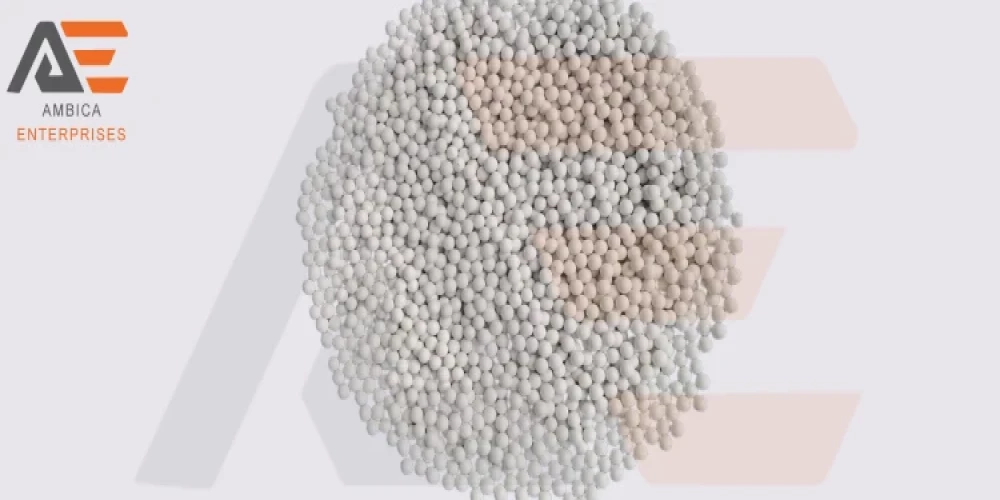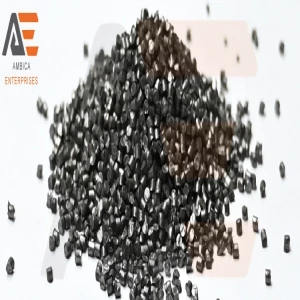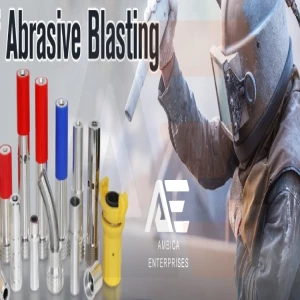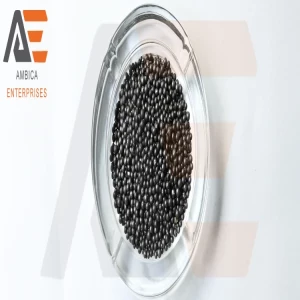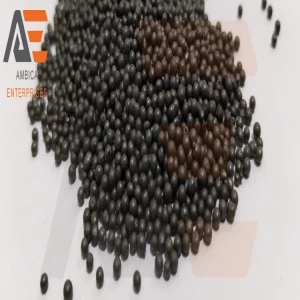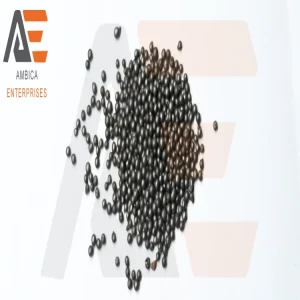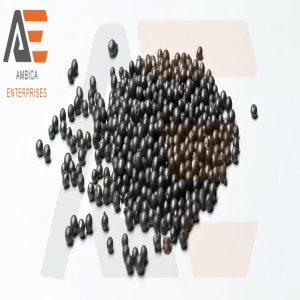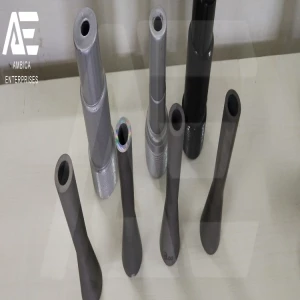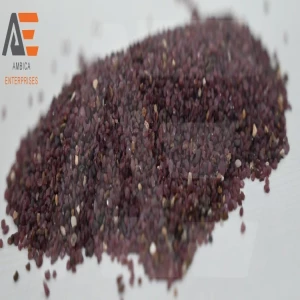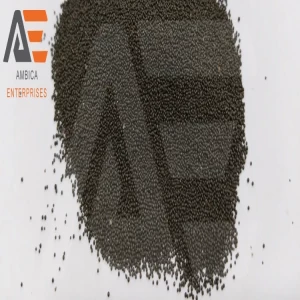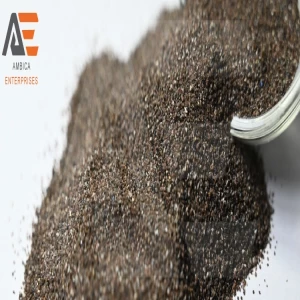Introduction Of Ceramic Blasting Media
Ceramic blasting media is also known as ceramic beads. Ceramic beads are spherical-shaped media that have great mechanical strength & wear rates. Ceramic is impact-resistant & produces relatively little dust. The ceramic beads maintain their round consistency & are chemically inert. Ceramic blasting procedures result in a smooth, brilliant satin finish. The density of the ceramic beads results in a faster impact speed, assembling it an excellent alternative for deburring & peening. Blasting pressure requirements range from 40 to 65 psi, accompanied by media cycle lifetimes of 70 to 90 times throughout blast system. Ceramic blasting media is incredibly adaptable & could be blasted engaging all delivery systems, including air, wheels, & water. Ceramic beads are a common peening material for titanium elements. Ceramic grit is angular & awesome for etching elements chaperoned by a long medium life. We also provide all types of abrasive media such as steel shot, steel grit, glass beads, copper slag, tungsten carbide grit, cast steel shot, etc.
Ceramic Beads Blasting Media
The primary element of ceramic beads blasting media is zirconia, whichever is mostly engaged for exterior treatments like sand blasting machine & shot peening. Ceramic shot is made by melting heightened-grade imported zircon sand to a liquid at elevated temperatures & then spraying it into balls. Magnetic separation is employed to screen & remove zirconia ceramic spheres, resulting in particles accompanied by great roundness, strength, & constant bit size. Ceramic shot's spherical particles could improve exterior brightness throughout sand blasting while the jobpiece itself doesn't adjust color. It is commonly utilized for sand blasting & exterior treatment of aircraft elements, stainless steel plates, structural components, stainless steel kitchenware, medical devices, mobile phone/laptop shell, vehicle chassis/engine, sports equipment, & additional sectors.
Result after ceramic bead blasting isn't equivalent to outcome behind glass beads blasting. The procedure of glass bead blasting is reasonably understood & often employed in order to acquire a livery finish behind tooling stainless steel. Glass bead blasting of stainless steel, however, includes a number of significant disadvantages. In practice, most of the time material is blasted chaperoned by an elevated percentage of destroyed beads because of the increased breakdown rate of the glass beads, as an outcome of whichever a moderately elevated roughness (1.5-3.0 microns) is obtained. In practice it is established specific surfaces individuals include been blasted accompanied by glass beads offer a boosted rate of dirt adhesion & are complex to clean. As an outcome of contamination of the surface & an elevated roughness, incorporated chaperoned by complications to clean & rinse, erosion could surface even in a moderately mild (atmospheric) environment.
Ceramic beads are an elevated-grade zirconia-based blast medium accompanied by an extremely slowly breakdown rate, making them perfect for influencing finishing processes affecting both manual & automated machines that require uniformity of finish. Furthermore, dust levels constructed are far lower than those accompanied by the identical glass bead.
For more info about tungsten carbide nozzle visit our website.
The basic outcome comes in an assortment of bead sizes, completing it appropriate for several blast procedures like exterior cleaning, deburring, cosmetic enhancement, & so on. A better grade outcome is even unrestricted, whichever includes inspections for roundness, surface flaws, & other characteristics certain allow the bead to be approved to stringent measures of aerospace & automotive shot peening applications.
For more info about stainless steel shot visit our website.
Advantages Of Ceramic Beads Blasting Media
Blasting with ceramic beads doesn't include problems listed above. Ceramic beads break down at a pace 50 times slower than glass beads. As a consequence, it is ensured absolute only pure round beads (about 100 m) are engaged at all times. This quickly delivers optical appearance of ceramic bead-blasted surfaces: a compatible satin shine finish. A roughness of less than 1.0 m could be attained, hanging on initial material's roughness.
Application of Ceramic Blasting Media
- Medical Treatment: Medical therapy includes exterior treatments like deburring stainless steel surgical tools & titanium alloy human-implanted devices.
- High Iron Field: It may be utilized to sand blast the exterior of elevated iron aluminum alloy components, enhancing the metal texture & creating a smooth satin finish. Used to grind & polish high-speed rail.
- Automotive Field: Ceramic shot could be utilized for exterior cleaning & deburring of automotive engine castings; to cleanse welds & welding places on the vehicle floor in preparation for later spraying; & to shot peen automobile springs to increase fatigue life. It is utilized to beautify & sand blast aluminum alloy automotive wheels, reducing stress & increasing consequence resistance.
- Mold & machining: Ceramic blasting media is used for abrasive blasting machine operation of stainless steel mold, copper mold & aluminum alloy mold, such as tire mold, injection mold & stamping mold, to enhance exterior finish. Clean the flash & burr of machined parts.
- Electronic Equipment Field: Ceramic shot is employed in the electronics industry to sand blasting shots of mobile phones, tablet computers, & watches constructed of aluminum alloy & stainless steel. It could alter roughness & gloss of the exterior as needed & has fingerprint-resistant properties.
- Kitchen Utensils Industry: It is employed to sand blast high-quality stainless steel cookware, pot bottoms, soup spoons, & additional goods, giving them a delicate metal feel & antibacterial properties.
- Glass Goods Industry: utilized for atomization treatment of glass, substituting hydrofluoric acid chemical etching procedure to decrease pollution.
- Shot Peening of Aviation Parts: Shot peening machine operation of aircraft components is utilized to increase exhaustion resistance of carbon steel, titanium alloy, aluminum alloy, & additional aviation automatic components while also annihilating exterior pressure. It is appropriate for exterior strengthening of aircraft wings, aero-engine turbine blades, turbine discs, gears, & landing gear.
Ceramic Blasting Media Features
- High hardness enables good energy transmission at the impact location.
- High toughness ensures media stability during hundreds of blasting cycles.
- There is no contamination of the treated surface.
- Dust production is kept to a minimum in order to maximize productivity & reduce blasting equipment wear.

